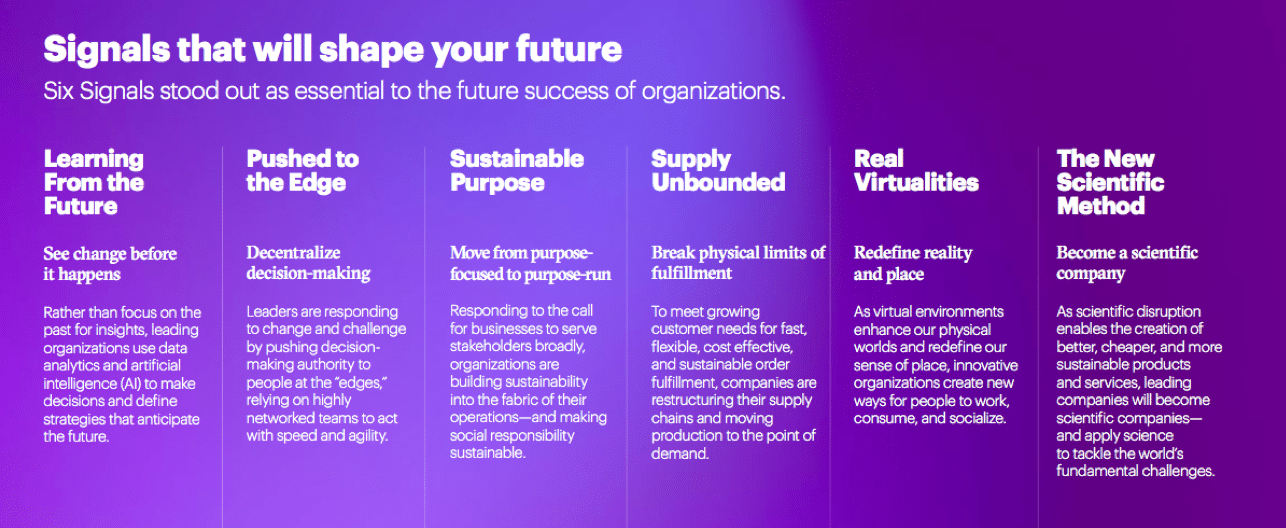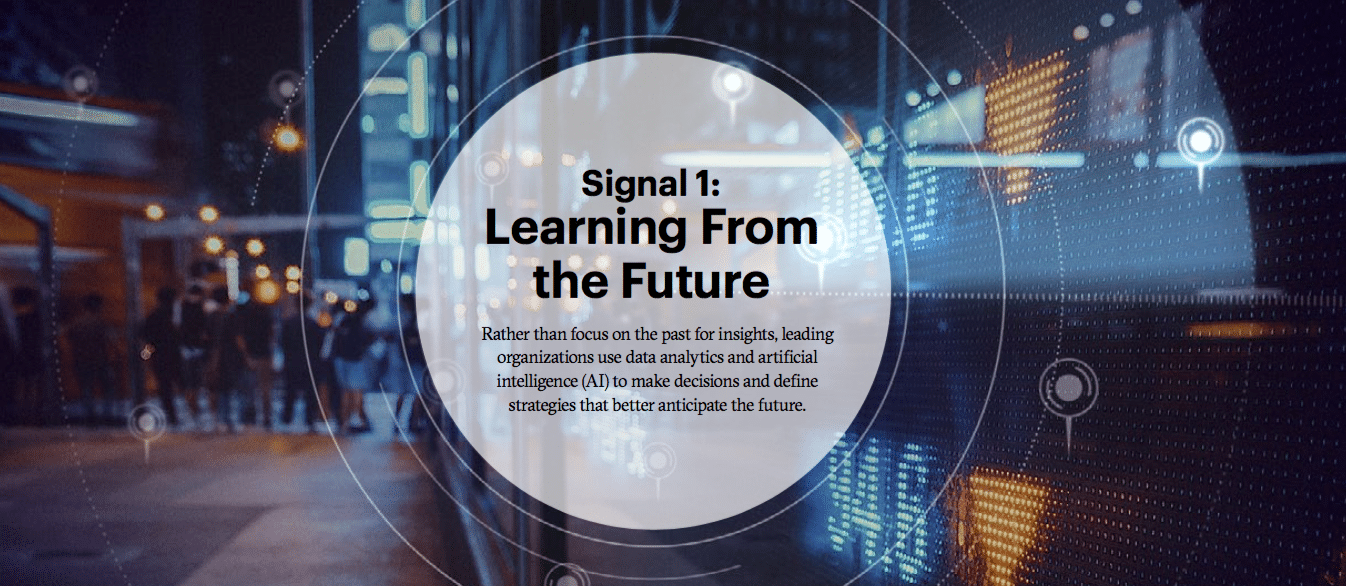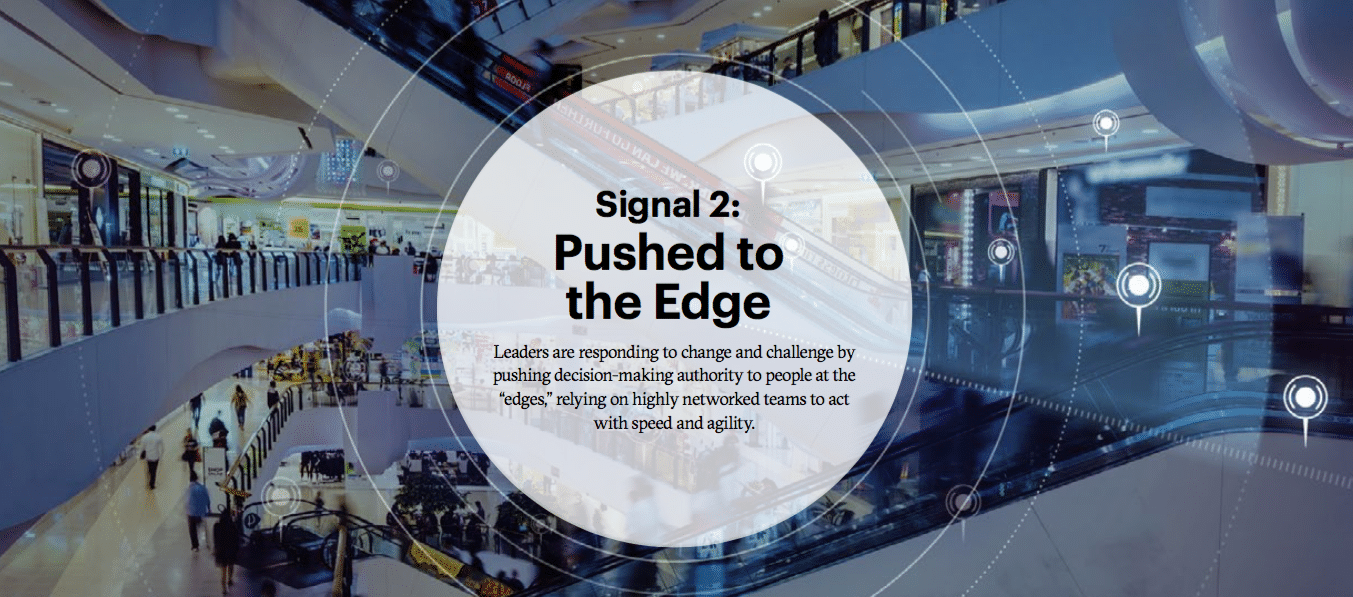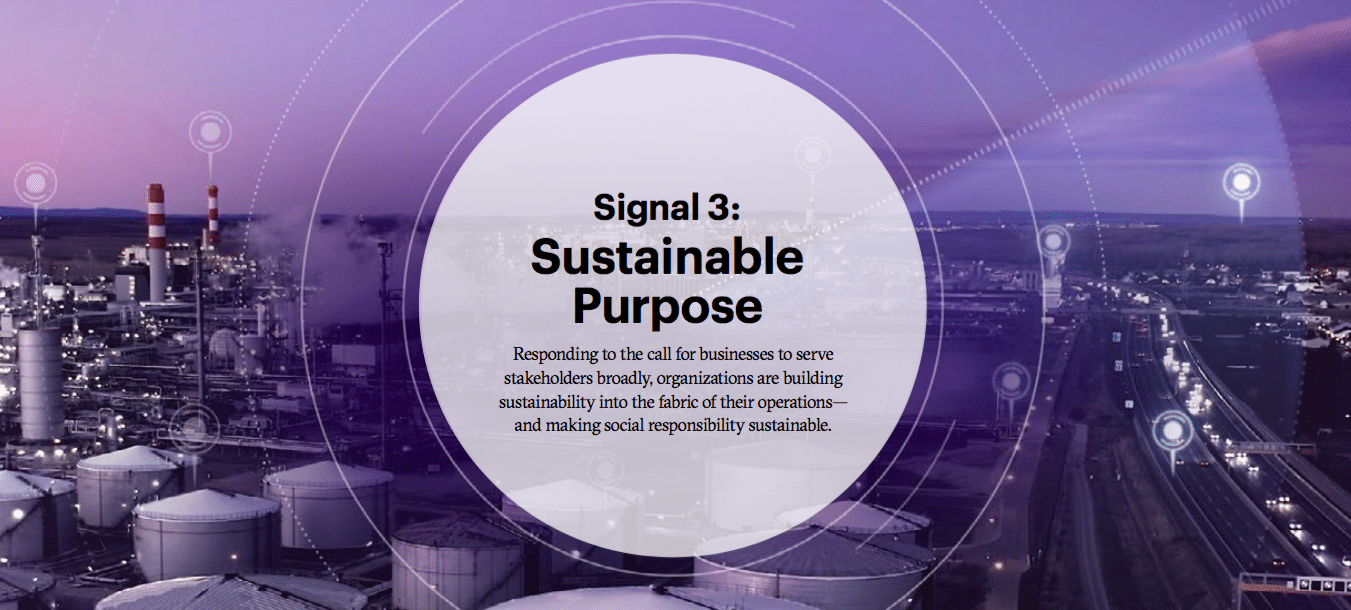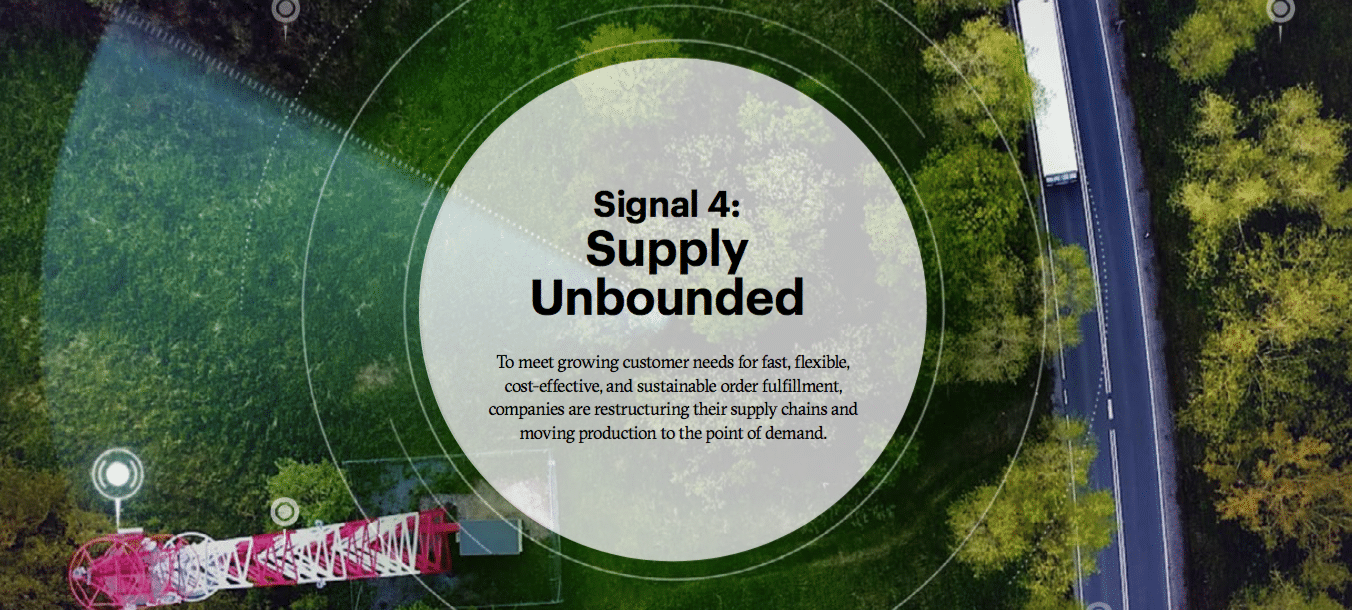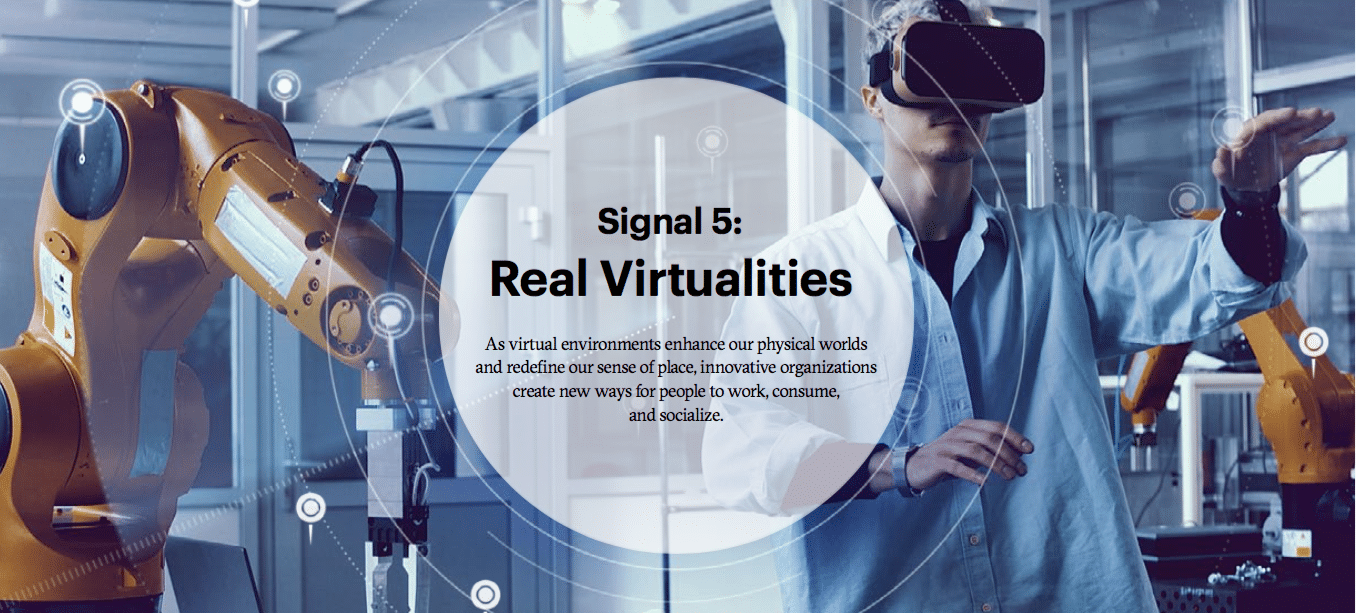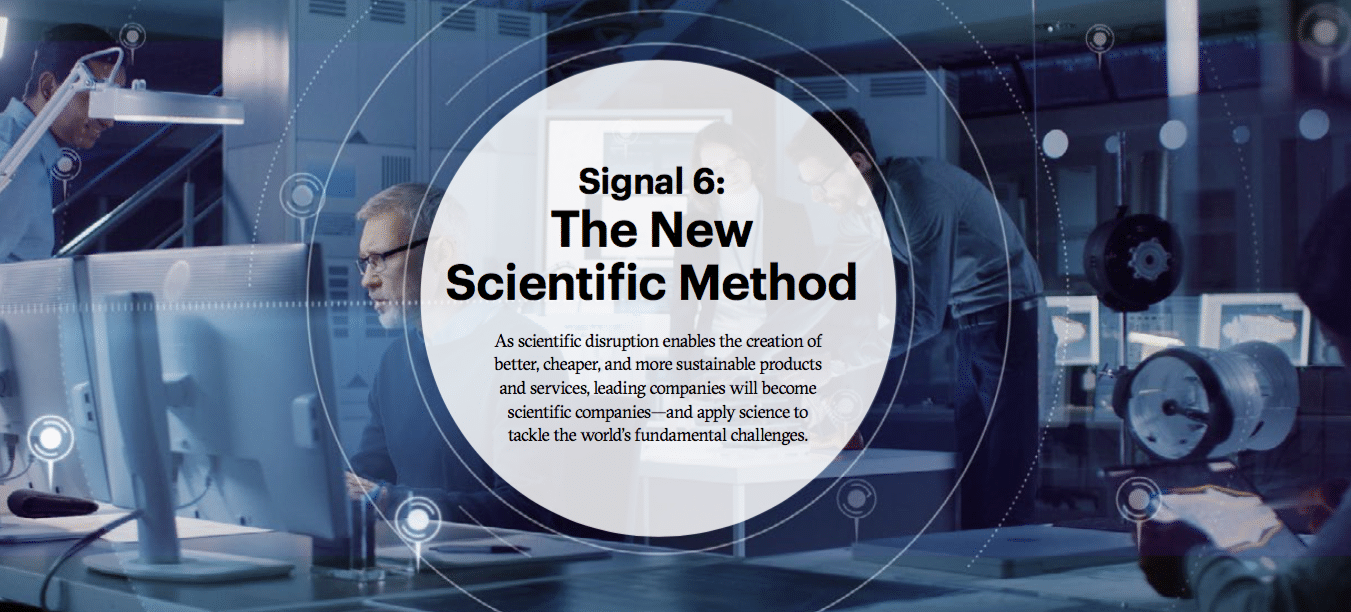If COVID taught us anything, it’s that things can always go wrong, and we need to be prepared for the unexpected—and that today’s business model needs to be ready to adapt on the fly. New research from Accenture shows that while 88 percent of companies finally have a clear picture of the challenges they face today, a mere 6 percent are completely confident in their current abilities to foresee and respond to future disruption.
The professional services firm’s newly released Business Futures 2021 study aims to help leaders make sense of a new reality by identifying the “signals” of business change that are reshaping organizations globally—and will be critically important for leaders to understand in order to drive success today and beyond.
“The compressed timeframe for action in the face of last year’s disruption drove a greater sense of urgency as well as opportunity for organizations to increase their agility, explore new business models and build new capabilities that boost resilience,” said Annette Rippert, group chief executive, Accenture Strategy & Consulting, inn a news release. “Our inaugural Business Futures report serves as an essential radar to help leaders navigate through the Signals of business change with confidence, to not just see, but also seize, their best future.”
Longstanding trends like the increased importance of experiences, greater adoption of cloud, and changes in buying patterns have all been interrupted, accelerated, or reversed due to the pandemic. At the same time, new supply chains and business models were set up in days not months, and the promise of new scientific breakthroughs was emphatically realized in months, not years. When coupled with profound, structural changes following more than a year of turbulence, a business environment ripe for reinvention emerged, with a strong desire to look deeper into the future and to better map the trajectory and impact of change.
Six Signals to prepare for the future of business
Starting with an expansive list of 400 crowdsourced trends, Accenture teamed with external advisors, academics, and researchers to narrow down the list to 25 Signals of business change.
While all 25 Signals were shown to mature and have their greatest impact on organizations within the next three years, six Signals stood out as being essential to the future success of organizations, presenting opportunities and incentives for leaders to embrace change and find new ways to grow, starting today:
As organizations fundamentally rethink ways of doing business that deliver growth, focusing on historical data to inform the future has been challenged. To make decisions faster, many organizations are now capturing new data sets and using analytics and artificial intelligence to spot, respond to and target changing market and consumption shifts.
The report finds that 77 percent of organizations have increased their use of both internal and external sources of real-time data over the past 12 months, yet only 38 percent reported that people across their organization consistently use real-time data in their day-to-day work. Moreover, only 36 percent of businesses said they have a C-suite member accountable for these efforts, and fewer than half (43 percent) have sufficient skills within their workforce to support this capability.
The global crisis has made markets much more fragmented, and distinct regions are emerging with their own governance systems, economic models, and cultural norms. At the same time, consumer behaviors are changing fast, with new competitors catering to evolving needs. Businesses are responding by pushing decision-making authority to people at the edges of their organizations, creating a networked structure of teams that can act with speed and agility.
When businesses empower their “edges” to make most day-to-day operational decisions, they free up their headquarters to focus on key strategic decisions. The report found that 91 percent of organizations are willing and able to operate more like a broad federation of enterprises to respond to increasingly fragmented business environments, and more than half (58 percent) say their business model will change over the next year.
Organizations recognize the need to have a purpose that benefits all their stakeholders, but a growing gap between intentions and results emerged. The purpose paradox demonstrates the challenges faced in building sustainability into the fabric of their operations and delivering on commitments made for the benefit of all their stakeholders.
The report found that 28 percent of executives say that they are not personally committed to delivering value for all stakeholders, and nearly half (48 percent) of organizations report that one of the biggest barriers is balancing their commercial interests. However, there are signs that the tide has begun to turn toward safeguarding sustainability ambitions alongside profits, with only 24 percent of leaders saying they would consider cutting investments in environmental, social and governance (ESG) initiatives to avoid missing earnings guidance.
The global pandemic stretched supply chains like never before as organizations took drastic steps to keep goods moving. To meet growing expectations for fast, flexible, cost-effective, responsible and sustainable order fulfillment, organizations are breaking the physical limits of their supply chains and moving production to the point of demand.
The report found that the majority (92 percent) of organizations have increased or plan to increase the use of micro-fulfillment centers; a similar number (96 percent) of organizations have or plan to create regional supply chains. Here, too, the alignment on value for all stakeholders shows its prominence, with 80 percent of organizations saying that their customers’ expectations around sustainability significantly increased in the last 12 months.
As virtual environments come of age, the physical and virtual worlds are blurring and redefining our sense of reality and place while also creating new ways for people to live, work, consume and socialize.
Emerging from a year of limited physical interaction, businesses are doubling down on virtual, with 88 percent of organizations investing in technologies to create virtual environments and, among those, 91 percent are planning to invest further. While current virtual-reality (VR) technology mostly engages our senses of vision and hearing, over time it will become increasingly realistic, engaging all senses, and creating a greater connection to the physical.
The pandemic shone a spotlight on scientific innovation, putting it at the top of the business agenda. While during the past decade, every company became a digital company, in the coming decade, every company will need to become a scientific company—and apply science to tackle the world’s fundamental challenges. Working at the convergence of the new frontiers of science will bring radical possibilities, but only if organizations can enhance their approaches to innovation.
The report found that 83 percent of organizations agree that adopting a scientific approach to innovation will position them for future success, and 82 percent said that investing in sciences outside their traditional industry boundaries will be critical to their organization’s success.
“It’s clear that while organizations were compelled to adapt to the compressed transformation of the past year, today there is a strong consensus that they must proactively shift their strategies, rethink their trajectory and bring their people along to adapt to this new landscape as they reinvent for a profoundly different tomorrow,” added Rippert.
Download the full report here.
Accenture used a three-step process to compile its 2021 of Business Futures:
- Crowdsource: 400 Signals of business change were crowdsourced from more than 400 researchers and members of Accenture’s expert network—including representatives from across business, academia, and civil society. We synthesized this input to an initial list of 30 Signals.
- Prioritize: We then stress-tested the Signals with our global community of more than 2,000 industry and functional leaders across Accenture—using interviews, surveys, and workshops—to refine the list of Signals to 25, of which we prioritized six.
- Test and substantiate: We then used mixed research methods to test and further substantiate the six prioritized Signals. These methods included economic modeling, data science (leveraging AI and natural language processing) as well as a global survey of 2,650 C-suite executives fielded from March through April 2021. Respondents were C-level executives at large organizations based in 18 countries and spanning 20 industries.


